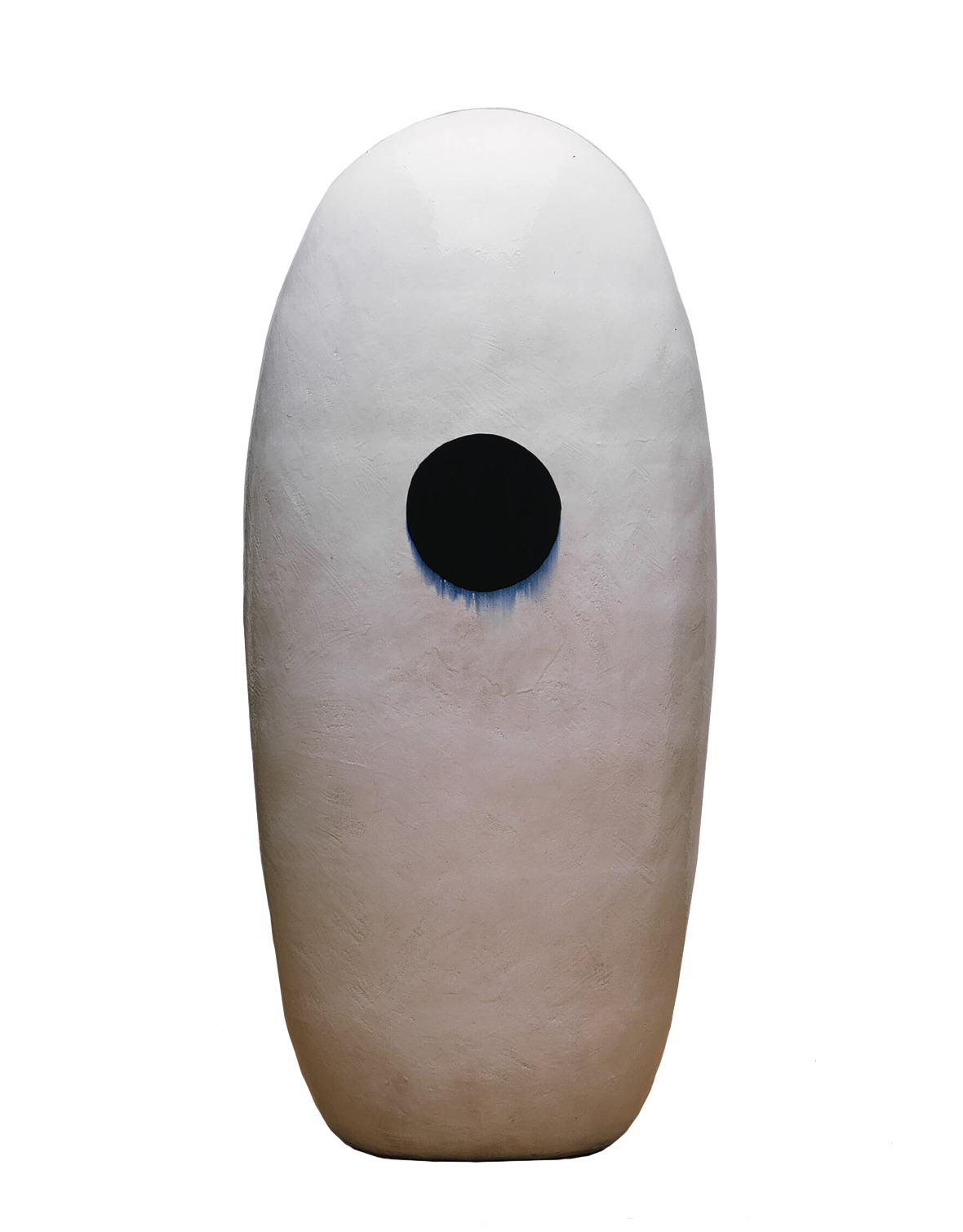in that space, at that time
in that space, at that time
7 mins
2023
Commissioned by the Omaha Symphony in consortium with the Oregon Symphony and Music Academy of the West, with generous funding provided by the Holland Foundation, Polina & Bob Schlott, and Martha & David Slosburg. Ankush Kumar Bahl, Music Director
Dedicated to Ree & Jun Kaneko and the Omaha Symphony
Listen
Listen
Program Notes
Program Notes
Attempting to musically catalog the breadth of artist Jun Kaneko’s work might have been Sisyphean in scope. As composer Andy Akiho began writing, however, certain pieces and processes sifted out, ultimately making Sculptures a showcase of ideas that are uniquely Kaneko’s own. First, as art historian Glen R. Brown writes, “his interest to repeat the same idea in a different material to see how it looked.” Second, specific material choices that create inherent relationships between the piece and the viewer. Third, space itself, in all its meanings, or ma: where questions of inches – whether in relation to another sculpture, the viewer, the density of the work, a pattern, or a form – create ripples of consequence.
Sculptures is a collection of nine compositions, alternating between full-orchestra, percussion, digital, and in one case, the symphony brass section. Some of the compositions reference particular art works by Kaneko; others, whole swaths of the artist’s output. In addition to constant support from Ree and Jun Kaneko and access to Kaneko’s work in Omaha and Portland, Oregon, Glen R. Brown’s Jun Kaneko: The Space Between was integral to the composer’s process and these notes.
Kaneko’s largest works are his Dangos, referenced in Akiho’s orchestral finale, in that space, at that time. Brown writes, “Each [Dango] is an island in space but also an element of an archipelago: unique and self-sufficient but reflecting implicit kinship with others that have come before and more that are yet to be.” The first large Dangos are the product of Kaneko coming to Omaha in the mid-1980s, at the invitation of then Ree Schonlau, and realizing that he could construct large, closed sculptures that often towered over the creator but still provided stillness, intimacy, and calm. When struck, Akiho found that each carries a unique voice but return to silence almost immediately. He worked to capture his initial, overwhelmed reaction to the pieces, akin to walking amidst calm giants. Ultimately, in that SPACE, at that TIME is about one’s experience and Kaneko’s artistic core: the ma created by being with these works, in their space, at the time given.
- Dani Meier
To rent a score and full set of parts, please submit a rental inquiry. Or, purchase study scores and/or parts below:
Couldn't load pickup availability

